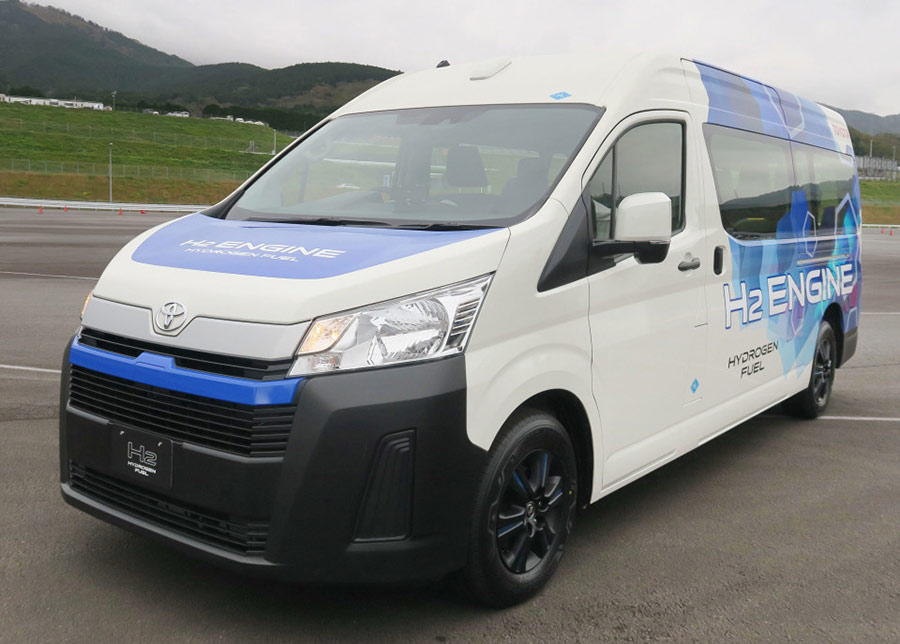THE world is continuously transitioning from fossil fuels to renewable energy. Hydrogen has always had the potential to be the game-changer for the transportation sector. But the longer development period and quicker implementation of stored chemical energy technologies via batteries has become the standard.
However, the reality of hydrogen-powered vehicles is far from the widespread adoption often envisioned. While electric vehicles (EVs) are proliferating rapidly, hydrogen fuel cell vehicles (HFCVs) face significant hurdles that hinder their widespread adoption.
According to Hydrogen Central, a website completely dedicated to hydrogen energy, globally, there are approximately 60,000 hydrogen fuel cell vehicles on the roads, with the majority concentrated in regions like California, Japan, South Korea, and parts of Europe.
In the U.S., there are about 17,000 hydrogen-powered vehicles, all located in California due to its relatively developed hydrogen refueling infrastructure. In contrast, nearly three million EVs have been sold in the U.S., highlighting the disparity between the two technologies.
In Southeast Asia, the province of Sarawak began pilot testing in February 2020, hydrogen-powered buses for a new route. Even earlier in 2004, Singapore was one of the five cities selected by Daimler Chrysler to test and run a fleet of six Hydrogen Fuel-Cell Vehicles (HFCV) buses on the roads. And in 2010, the first HFCV bus was deployed to ferry athletes during the Youth Olympic Games. The prohibitive cost of hydrogen led to the bus being retired and eventually disposed of.
In the Philippines hydrogen projects are mainly aimed at power production with the Department of Energy (DoE) leading the initiative. Then there is Elmer Francisco, CEO of eFrancisco Motor, inheritor of the Francisco Motors jeepney heritage, who has made several e-jeepney prototypes and earlier this year entered into a partnership with HDEX, a UK-based energy exchange. His idea is to produce hydrogen-powered jeepneys.
“We do not see hydrogen as an alternative fuel, rather, it is fuel of the future,” Francisco said in a press statement.
On the commercial side, only a few hydrogen-powered models have been available. Since 2015, the Honda Clarity Fuel Cell, the Hyundai Nexo, and the Toyota Mirai. Honda has since ceased production of the Clarity, and Hyundai has sold only about 1,600 Nexo SUVs over six years. Toyota remains the most committed to hydrogen technology, having sold approximately 14,300 Mirai sedans across two generations in the U.S.
Hydrogen fuel cell vehicles function similarly to electric vehicles in that they use an electric motor to drive the wheels. However, instead of relying on large batteries, they utilize a fuel cell stack where hydrogen combines with oxygen to produce electricity and water vapor.
This process classifies HFCVs as series hybrids, often referred to as fuel cell hybrid electric vehicles (FCHEVs).
Producing hydrogen typically involves steam methane reforming, which relies on natural gas and results in significant carbon emissions. While electrolysis, a cleaner method using renewable energy, exists, it is currently expensive and energy-intensive. Additionally, hydrogen is challenging to store and transport due to its low density, requiring high-pressure tanks or cryogenic storage, says a report from CGTN News.
A critical barrier to the adoption of hydrogen vehicles is the lack of refueling infrastructure.
California, the leading state for hydrogen vehicles, has fewer than 60 hydrogen stations, many of which are not always operational. This unreliable infrastructure severely limits the practicality of owning a hydrogen vehicle. For instance, a disruption in 2019 caused by an explosion at a hydrogen production facility left many drivers without fuel for their vehicles
Hydrogen refueling is also more complex than gasoline or electric charging. Aligning the heavy nozzle and ensuring a proper seal for refueling can be cumbersome. Additionally, current stations can only fuel a limited number of vehicles before needing time to re-pressurize, further complicating the refueling process
Hydrogen fuel is significantly more expensive than gasoline or electricity. In California, a kilogram of hydrogen costs between $10 and $17, equating to roughly $5 to $8.50 per gallon of gasoline. This high cost is a significant disadvantage compared to the relatively low cost of charging an EV, which can be as low as $1 to $2 per gallon equivalent.
Automakers like Toyota, Hyundai, and Honda have offered complimentary hydrogen fuel to offset these costs, but such incentives are not permanent
While hydrogen vehicles offer zero-emission benefits, their future as a mainstream technology for passenger cars is uncertain. The current infrastructure, cost, and practicality issues make EVs a more likely dominant technology. However, hydrogen may find its niche in specific applications such as heavy-duty vehicles, long-haul trucking, and sectors like shipping and aviation, where battery technology may not be feasible.
The future of sustainable transportation will likely see a mix of technologies, with hydrogen and batteries coexisting and complementing each other in the pursuit of a decarbonized transportation system.





